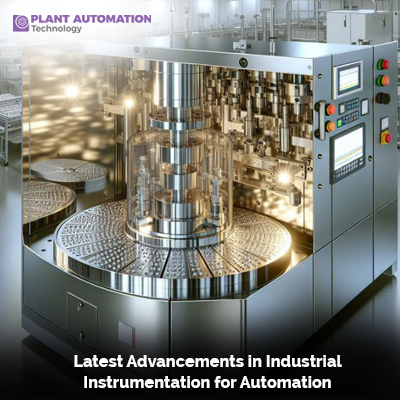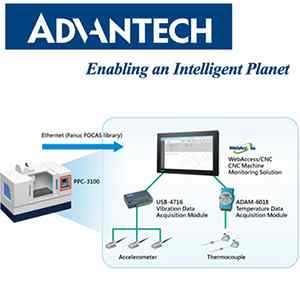Latest Advancements in Industrial Instrumentation for Automation

Are you ready to dive into the exciting world of industrial instrumentation? In this article, we will explore the latest advancements in automation technology and how they are revolutionizing the industrial sector. From cutting-edge sensors to state-of-the-art control systems, manufacturers are embracing these innovations to increase efficiency and productivity like never before. With advancements in connectivity, data analytics, and artificial intelligence, industrial automation is transforming the way factories operate.
Importance of Automation in Industrial Processes
Automation has become an integral part of modern industrial processes. It plays a crucial role in enhancing productivity, ensuring precision, and reducing human error. By automating repetitive and labor-intensive tasks, manufacturers can streamline their operations and achieve higher levels of efficiency. Industrial instrumentation forms the backbone of automation, providing the necessary tools and technologies to monitor, control, and optimize various processes. As industries increasingly embrace automation, the demand for advanced instrumentation continues to grow.
The evolution of industrial instrumentation has been remarkable. From simple mechanical switches to sophisticated digital sensors, the technology has come a long way. Early instruments were limited in their capabilities and lacked the connectivity and intelligence required for modern automation. However, with advancements in technology, today's industrial instrumentation offers a wide range of features and functionalities that are transforming the manufacturing landscape.
Advancements in Sensor Technology
Sensors are at the heart of industrial instrumentation. They provide vital data about various parameters such as temperature, pressure, flow, and level, enabling precise control and monitoring of industrial processes. Recent advancements in sensor technology have paved the way for more accurate and reliable measurements. For instance, the development of MEMS (Micro-Electro-Mechanical Systems) sensors has revolutionized the industry by miniaturizing sensors and improving their performance. These sensors are not only more sensitive but also consume less power, making them ideal for industrial applications.
Another significant advancement is the integration of wireless communication capabilities into sensors. Wireless sensors eliminate the need for complex wiring and enable seamless integration into existing automation systems. This wireless connectivity allows for real-time data acquisition and transmission, enabling faster decision-making and response times. Moreover, sensors equipped with IoT capabilities can connect to the cloud, enabling remote monitoring and analysis of data, further enhancing the efficiency and effectiveness of industrial processes.
Role of Artificial Intelligence in Industrial Automation
Artificial Intelligence (AI) is playing a pivotal role in revolutionizing industrial automation. By leveraging AI algorithms and machine learning techniques, manufacturers can make sense of the vast amount of data generated by industrial processes. AI-powered systems can analyze data patterns, identify anomalies, and provide valuable insights for process optimization and predictive maintenance. For example, AI algorithms can detect early signs of equipment failure based on sensor data, allowing manufacturers to take proactive measures to prevent costly breakdowns.
Furthermore, AI enables intelligent decision-making in real-time. By combining data from various sensors and other sources, AI systems can dynamically adjust process parameters to optimize efficiency and reduce energy consumption. This adaptive control capability ensures that industrial processes operate at their peak performance, maximizing productivity while minimizing waste.
Internet of Things (IoT) in Industrial Instrumentation
The Internet of Things (IoT) is revolutionizing the way industrial instrumentation operates. By connecting sensors, instruments, and control systems to the internet, manufacturers can create a network of interconnected devices that communicate and collaborate in real-time. This connectivity opens up new possibilities for remote monitoring, predictive maintenance, and data-driven decision-making.
With IoT-enabled industrial instrumentation, manufacturers can remotely monitor the status and performance of equipment, enabling proactive maintenance and reducing downtime. For example, a vibration sensor installed on a rotating machine can continuously monitor its condition and transmit the data to a centralized system. If the sensor detects abnormal vibrations, it can trigger an alert, allowing maintenance teams to take immediate action and prevent a potential breakdown.
Benefits of Advanced Industrial Instrumentation
The adoption of advanced industrial instrumentation brings numerous benefits to manufacturers. Firstly, it improves overall operational efficiency by enabling real-time monitoring and control of industrial processes. With accurate and timely data, operators can make informed decisions, optimize process parameters, and minimize wastage. This increased efficiency directly translates into cost savings and improved productivity.
Secondly, advanced instrumentation enhances product quality and consistency. By closely monitoring critical parameters and controlling process variables, manufacturers can ensure that each product meets the desired specifications. This, in turn, leads to higher customer satisfaction and increased competitiveness in the market.
Furthermore, advanced industrial instrumentation facilitates predictive maintenance. By continuously monitoring equipment conditions and analyzing data patterns, manufacturers can detect potential issues before they escalate into major breakdowns. This proactive approach reduces unplanned downtime, saves on maintenance costs, and extends the lifespan of critical assets.
Challenges and Considerations in Adopting Advanced Instrumentation
While the advantages of advanced industrial instrumentation are clear, there are challenges and considerations that manufacturers must address. Firstly, the initial investment required for implementing advanced instrumentation can be significant. Manufacturers need to carefully evaluate the return on investment and consider factors such as improved efficiency, reduced downtime, and enhanced product quality.
Secondly, integrating advanced instrumentation into existing systems can be complex.
Compatibility issues, data integration, and cybersecurity concerns need to be addressed to ensure seamless integration and protect sensitive information.
Lastly, the adoption of advanced instrumentation requires a skilled workforce capable of operating and maintaining these technologies. Manufacturers need to invest in training and education to equip their employees with the necessary knowledge and skills to leverage these advancements effectively.
Conclusion: The Future of Industrial Instrumentation for Automation
As we conclude our exploration of the latest advancements in industrial instrumentation, it becomes clear that automation is revolutionizing the industrial sector. From advanced sensors to artificial intelligence and IoT connectivity, manufacturers are embracing these innovations to improve efficiency, productivity, and product quality. The future of industrial instrumentation is promising, with continued advancements in technology and the integration of emerging trends such as edge computing and big data analytics. As manufacturers adapt to these changes, they will unlock new opportunities and gain a competitive edge in the global marketplace.







